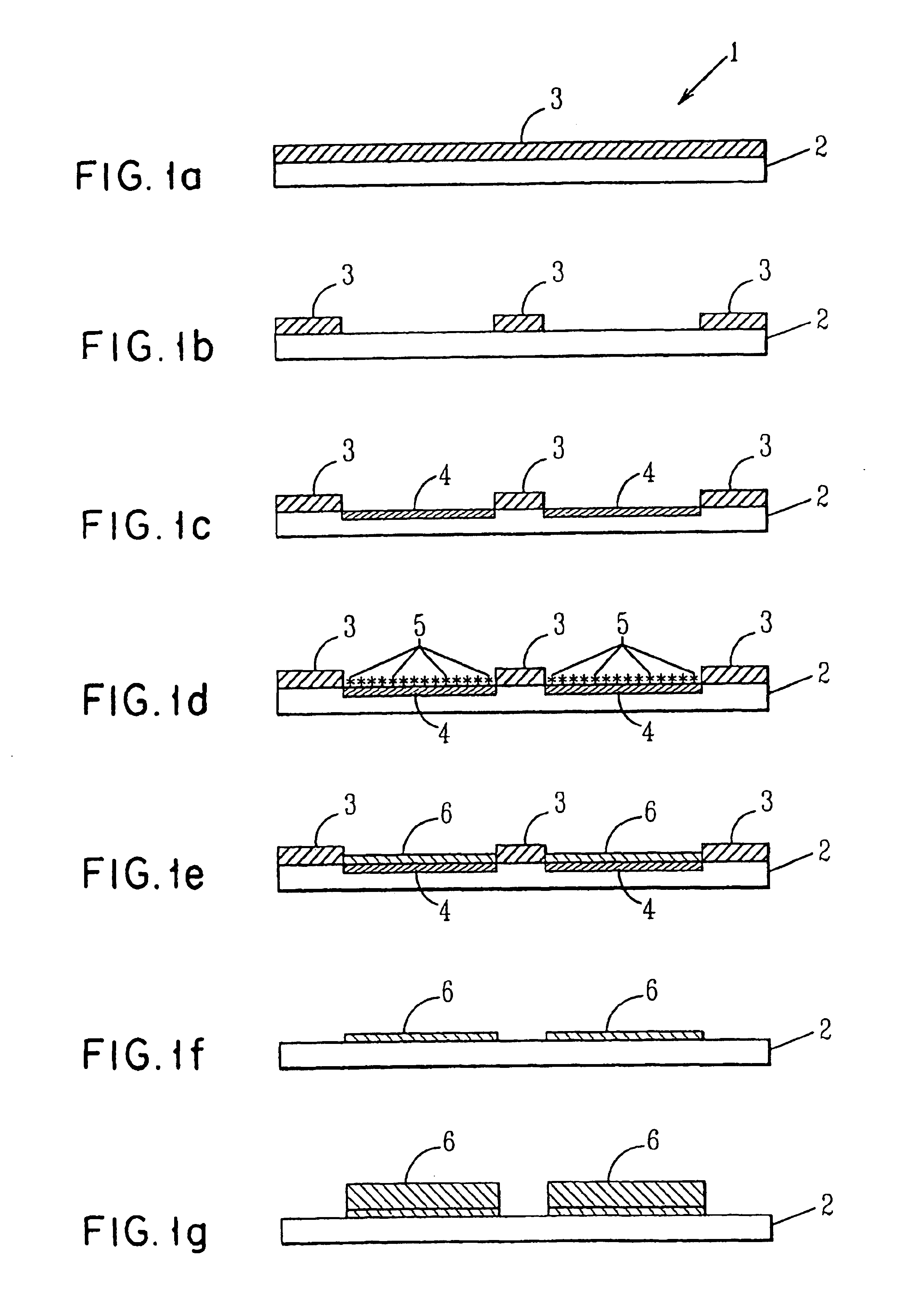Means of seeding and metallizing polyimide
a technology of metallizing polyimide and seeding, which is applied in the direction of liquid/solution decomposition chemical coating, transportation and packaging, nuclear engineering, etc., can solve the problems of poor adhesion of metal layers (or discrete lines and features), unattractive practice, and high cost of deposition process, so as to achieve enhanced adhesion between metals
- Summary
- Abstract
- Description
- Claims
- Application Information
AI Technical Summary
Benefits of technology
Problems solved by technology
Method used
Image
Examples
example 1
[0068]Samples of an imide polymer designated Polyimide 2525 having a thickness of 0.001 (1 micron) cm were dried at low temperature to 69 weight percent solids at 94% amic acid. Each polyimide substrate (2) was coated with a layer (3) (between 1 and 10 microns of a blend of poly(methymethacrylate) and Tinuvin 328 ultra violet absorbing dye. FIG. 1(a) shows the resist coated polyimide product (1).
[0069]The composite film (1) (resist / polyimide) was subjected to a 308 nm laser through a mask atop the polyimide. The poly(methymethacrylate) resist (3) was removed from areas where Cu deposition was desired. FIG. 1(b) shows the laser pattern after laser ablation has occurred.
[0070]According to the preferred embodiment, the exposed polyimide surface was exposed a 0.4M sodium hydroxide solution by immersing the work piece into the solution. FIG. 1(c) depicts the work piece after hydrolysis has occurred and shows the layer of hydrolysate reaction product (4) in place on the polyimide.
[0071]Th...
example 2
[0076]The process described in Example 1 was duplicated with the exception that poly(alpha-methylstyrene) was substituted for the poly(methylmethacrylate). The resultant product has the same beneficial properties as the product prepared in Example 1.
[0077]The process disclosed above has been implemented successfully with readily available materials in a bench top environment and is readily adaptable to manufacturing scale batch processing. FIG. 2 shows an optical micrograph of a pattern built using the method described above.
PUM
| Property | Measurement | Unit |
|---|---|---|
| Nanoscale particle size | aaaaa | aaaaa |
| Nanoscale particle size | aaaaa | aaaaa |
| Thickness | aaaaa | aaaaa |
Abstract
Description
Claims
Application Information
 Login to View More
Login to View More - R&D
- Intellectual Property
- Life Sciences
- Materials
- Tech Scout
- Unparalleled Data Quality
- Higher Quality Content
- 60% Fewer Hallucinations
Browse by: Latest US Patents, China's latest patents, Technical Efficacy Thesaurus, Application Domain, Technology Topic, Popular Technical Reports.
© 2025 PatSnap. All rights reserved.Legal|Privacy policy|Modern Slavery Act Transparency Statement|Sitemap|About US| Contact US: help@patsnap.com



